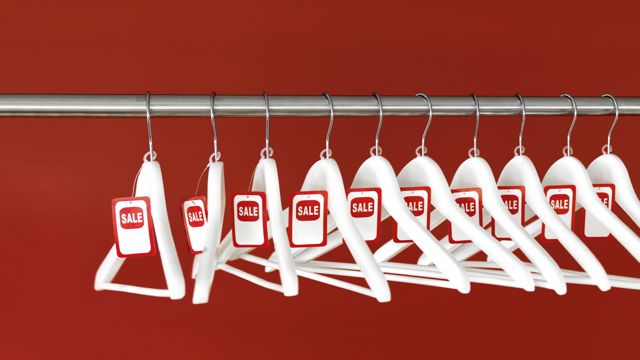Last year at this time we wrote a blog post titled “When Promotions Kill Your Brand Strategy” outlining our concerns that, while brand promotions may drive traffic to a retailer, retailers need to be careful that their promotions aren’t out of sync with their customers’ need and enduring qualities of their brand.
This year retailers seem to be even more locked into promotional strategies of discounting and price slashing. For consumers, researching the best retailer and the best time to get the lowest price is now an activity worthy of investment. Beyond the post-Christmas and Boxing Day sales period when retailers have traditionally sold off excess inventory, there are now amazingly discounted prices offered beginning on (and often even before) Black Friday, on cyber-Monday, the week of cyber-Monday, and on many other seemingly random and flash sale days. Prices for brand name goods vary incredibly; discounts routinely range from 40% to 70% off “regular” prices. As an example, a recent article in the Globe and Mail, Fierce competition, frugal shoppers pinch bottom line at Best Buy by Marina Strauss, covers how retail discounting in electronics has become fierce. To state the obvious, many retailers have decided to compete primarily on price.
While there is something to the rationale of trying to keep market share in the face of online discount retailers like Amazon, these retailers are largely throwing away their brand strategies. These businesses have moved away from differentiating on anything other than price. In a nutshell, price and discount promotions have become their brand strategy.
This trend leaves us with four observations which apply to retailers and other businesses which find themselves competing based on their price alone.
1. Price Competition
Competing primarily on price means your brand strategy isn’t doing much for you and needs to be examined. If you have decided that price competition is the only way to keep sales, then it is time to take a hard look at your brand and really think about what your customers’ need.
We advise that your brand strategy should made up of:
- a brand promise that fulfills both your customers’ need and your team’s passion;
- a brand personality that allows your brand to stand out for its authentic character; and
- a brand position which delineates the main reason your customer chooses your solution over the competition
Is your brand promise, position and personality no longer differentiating your brand? Have you stopped thinking about how your business can fulfill your customers’ need?
2. Getting Beyond Price Competition
Competing on price alone does not build brand loyalty.
If your strategy has been reduced to price competition, it is likely that the competitive landscape for your brand has changed. You need to rethink how you can differentiate your offering from your competition. In our blog post “Farmville: When New Brand Categories Kill”, we highlight the risk to your brand of being complacent in the face of changing competition.
Your business is competing to fulfill your customers’ need. There are plenty of brands vying to resolve your customers’ need and win their business. One customer need is to spend less money, but customer needs, human needs, are much more complicated than that. If you want to build a valuable brand, you need to really think about your business and how it can resolve your customers’ need in a valuable way.
3. Competitive Pricing Strategy
A competitive pricing strategy as part of your strategy, but not your entire strategy.
Deep discounts are encouraging consumers to buy where the price is best. Amazon is often targeted as the reason retailers are compelled to compete so fiercely on price. However, it would be very wrong to think that Amazon strategy is limited to a competitive pricing strategy. Amazon makes shopping quick and easy for its customers. Amazon makes researching products, prices and seller reliability easier for their customers, and it also offers low prices – but not necessarily the lowest price.
4. What to Do If Stuck With A Competitive Pricing Strategy
Retailers and other businesses who have fallen into fierce price competition must still stay “on brand”. To do this, their brand strategy needs to be reinforced to keep it top of my mind with their team.
What can electronics retailers and other businesses that have descended into price wars do? They should realize that things are unlikely to change overnight. It will take work and sacrifice to differentiate and build their brands. They may be locked into price competition for the near to medium term. It is going to hurt their margins. However, they should make sure that the brand promotions don’t become their de facto brand strategy and squander the brand they have built over the years. They need to ensure that their brand position, personality and promise are not lost. If their promise is service excellence then their team needs to know that service excellence needs to be delivered – even if the consumer is buying at 70% off. If their promise is friendly service, then friendly service needs to be delivered – even when hordes of bargain hunters are at the gates to snap up a “flash” sale offer.

